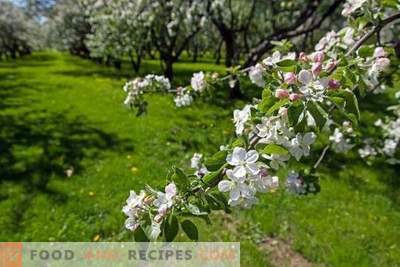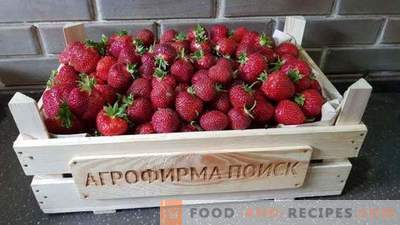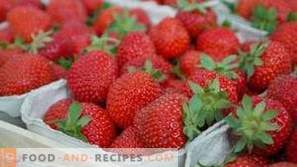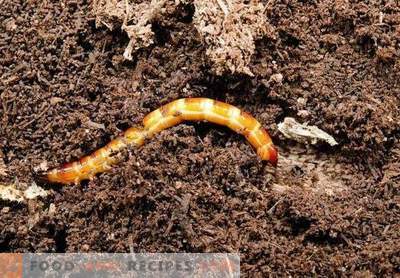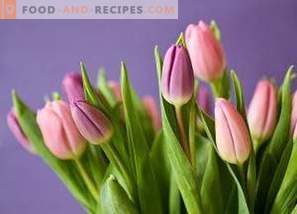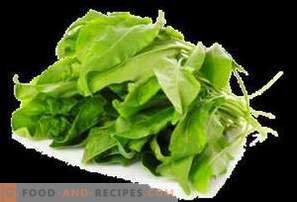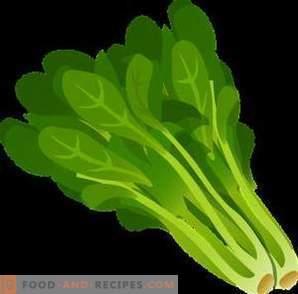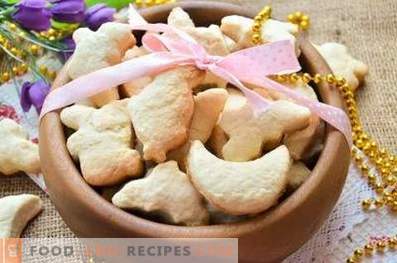Zinnias are great for decorating the local area in a rustic style, which is gaining increasing popularity in recent years. They are perfectly combined with a lion's throat, marigolds and marigolds. No less good these flowers look in tandem with any other plants.

Zinnia - plant description
Flower growers love zinnias for their beautiful variegated colors and amazing simplicity. These flowers are characterized by simplicity of cultivation and long periods of flowering. Each flower keeps on a plant till 35 days.
Due to its powerful long stalks, zinnias are ideal for cutting. They can stand in the water for more than a week, keeping the coloring bright.
Characteristics of Zinnia:
- one-year vegetation cycle;
- different heights of flowers - from 20 to 100 cm, which allows dividing zinnias into tall, medium tall, undersized and dwarf species;
- the leaves of flowers are whole, pointed, ovate, covered with short, rigid hairs;
- herbaceous stem, powerful, also pubescent;
- inflorescences - single apical baskets;
- different diameter of flowers - from 3 to 15 cm;
- long peduncles;
- single row or tiled arrangement of petals, creating complex lush inflorescences;
- color of various shades, except for a blue palette;
- resistance to high temperatures and drought;
- plants do not tolerate cold, seeds and flower die at -1 ° C.
How and when to sow zinnias
Sowing on seedlings carried out from the end of March. Depth of seed placement is 0, 5 cm. At soil temperature of + 22 ... + 25 ° C, seedlings appear on the 7-10th day, after 3-4 weeks the seedlings dive. In open ground, permanent seedlings are planted in late May and early June, when the threat of frost has passed.
Possible direct sowing in open ground in May. Seeds preferably dunk before planting. After the emergence of seedlings, the plants are thinned, leaving between them a distance of 25-35 cm.
Zinnia grows best in sunny areas with deeply processed, nutrient friable soil. Blossoming is plentiful, lasting from July to the most frost.
Interesting fact. Zinnia became the first flowering plant grown under zero gravity aboard the International Space Station. This happened in January 2016 at the Veggie installation.
There are about twenty species of zinnia and several hundred varieties of this flower. The trademark “Agrouspeh” offers to purchase the most popular.
Zinnia “Blackberry Jam”
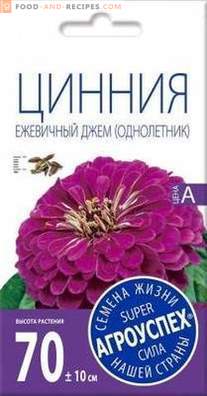
“Blackberry jam” refers to the dahlia group of zinnias. Giant for beds and vases, the growth of flowers reaches 80 cm. The flowering is elegant and lush. The plant is powerful, branched from the base. Stalks are strong, do not need a garter. Inflorescences hemispherical shape, their diameter is 8-10 cm. The flowers are large, bright purple color, look very impressive.
Zinnia “Cacti Mix”
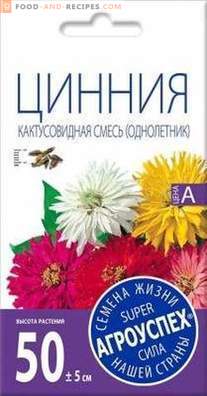
“Cactus Blend” is an incredibly attractive, renewed look of elegant zinnias with upright stems. Densely spectacular inflorescences with long, narrow petals rolled into a tube give the plant a decorative appearance. The variety is distinguished by its brightness and lush flowering. Large inflorescences-baskets with a diameter of 6-10 cm have an elegant hemispherical shape.
Zinnia “Chrysanthemum”
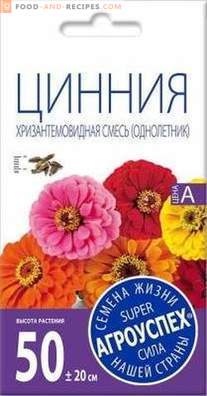
The outer reed flowers in the inflorescence of this variety are bent to the sides, the rest are raised to the center. Flowers of “Chrysanthemum-like” zinnia are semi-sprawling, up to 90 cm high. Inflorescences are terry baskets that look like chrysanthemums. Strong stems do not require a garter.
Features of growing zinnia
Friendly shoots, unpretentiousness, ease of care, and long flowering in combination with a variety of sizes and shades make zinnia very attractive for both beginners and experienced florists. These flowers are widely used for decoration of flower beds, rabatok and cut.
If you want to grow low, but thick bushes, then you can pinch the flowers. This is done when several pairs of true leaves appear on the plants. Pinching is performed on a 4-5 sheet.
During periods of severe drought, zinnia need watering. Water should be poured strictly at the root. Fertilize flowers only twice per season - one month after the emergence of shoots and immediately before flowering. As a fertilizer, you can use the mineral complex. Of the pests for zinnia most dangerous are May beetles, aphids, snails and slugs. The last two are fought by hand; flowers are protected from insects by spraying with insecticides.
Zinnia may well get sick, as a rule, it is exposed to fungal infections or rot. Such diseases are extremely difficult to overcome, so you have to completely remove the affected flowers.
It is best to prevent contamination of plants, adhering to the recommendations for growing and buying seed from reliable manufacturers.
TM “Agrouspeh” offers the highest quality zinnia seeds. Our products owe their origin to the best Russian and foreign seed producers. High quality seeds “Agrouspeh” confirm the current certificates.
Brand Agro-success in social networks
In contact with
Classmates
